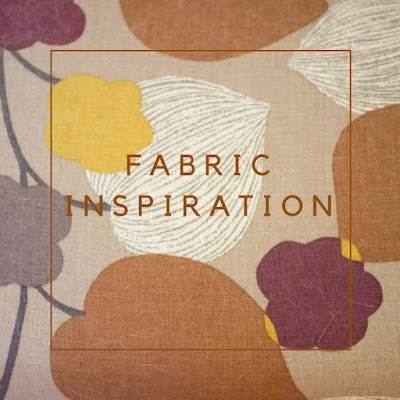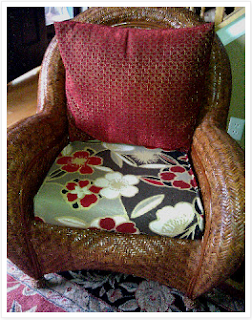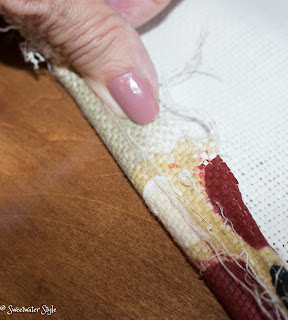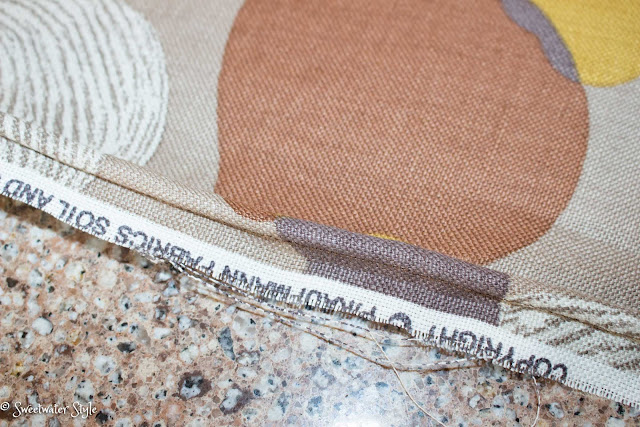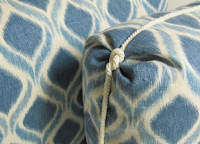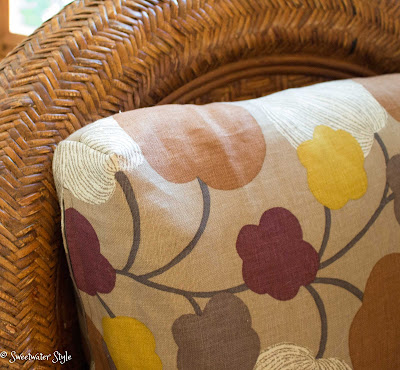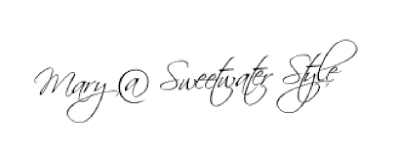Fabric junkies know what a dangerous place a wholesale fabric store can be.
The Sweetwater Daughter and I took a trip to the fabric store with no real “need” in mind.
Of course….
what should my eye spy….?
This remnant was only $5.00 a yard and has all the right colors for our family room.
I knew it would be the perfect way to make the two Malabar chairs coordinate with the room.
We moved these two chairs from the living room to the family room this spring.
As you can see….the fabric on the cushion is not the best for a room with rust colored carpet. But with the addition of beige cushions it was sorta okay.
It was serendipity!
I do a lot of NO SEW projects….alas….this is NOT one of them.
In fact…it is kinda picky sewing….not for the faint of heart.
This post is not really about the seat cushion….but you may be interested in that process.
And would you believe….? I learned how to do this BEFORE there was Google!
The real trick to tackling a sewing project like this is DECONSTRUCTION!
If you take the old cushion cover apart, you have the perfect pattern pieces to create the new one.
It is kind of scary….because once you rip it apart…there is no turning back!
One nifty discovery with the old cover was the way the welting is attached.
Instead of the usual piece of covered welting that is sandwiched between the pieces, this project uses a self welt.
That means that the welt becomes part of the top piece of fabric.
(I ripped out the old cording so that I had the perfect size for the new self welt.
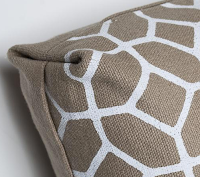 Did you know that the corner on the left is called a “Turkish” corner? I like it….but I simply wasn’t in the mood to do more welting!
Did you know that the corner on the left is called a “Turkish” corner? I like it….but I simply wasn’t in the mood to do more welting!
So….the next best and simple option was a box corner.
Simply put…this is a lot like the way paper grocery bags are designed. After the knife edges of the pillow are stitched, you pull out a triangle and stitch across at the depth of your side.
Confused yet?
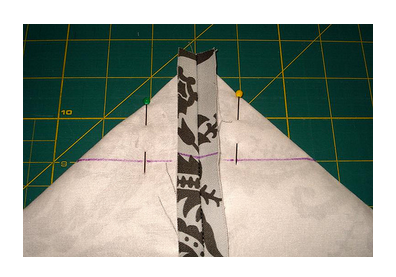 |
| Source |
This is a photo from yet another tutorial that is way better than anything I can write.
Check it out….
http://www.patchworkposse.com/how-to-sew-box-corners-3-ways/
This is a close up of the boxed corner.
This one is three inches deep.
Making the back cushions was a lot easier than doing the seat cushions.
I even went big time and put zippers in. WHOOT WHOOT!
The finished project is every bit as nice as the vision that I had standing in the fabric store!
Don’t you just love when that happens?
The price was right…..less than $25 for four cushions….not including my labor and time….but that is why they call it DIY!

